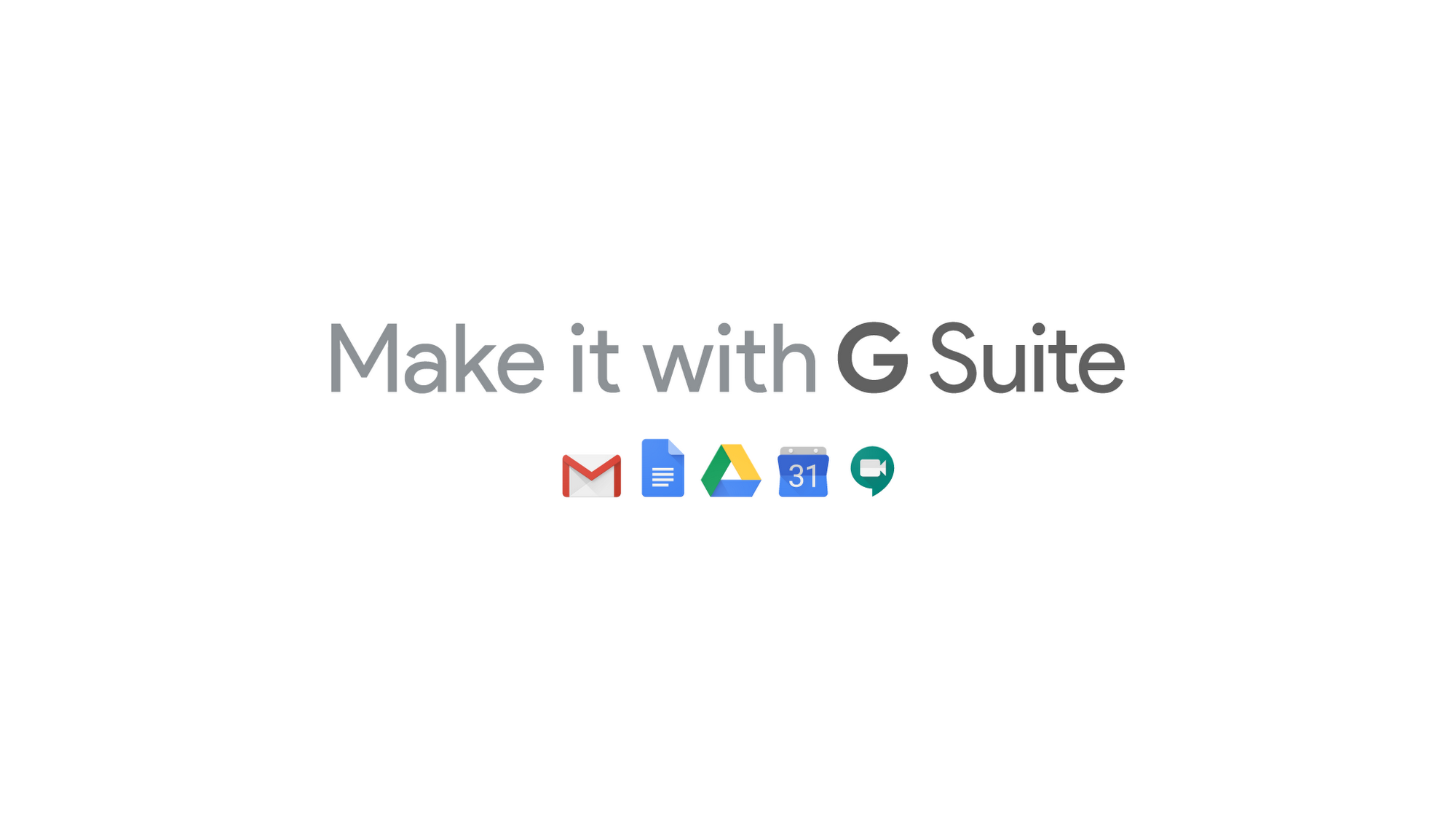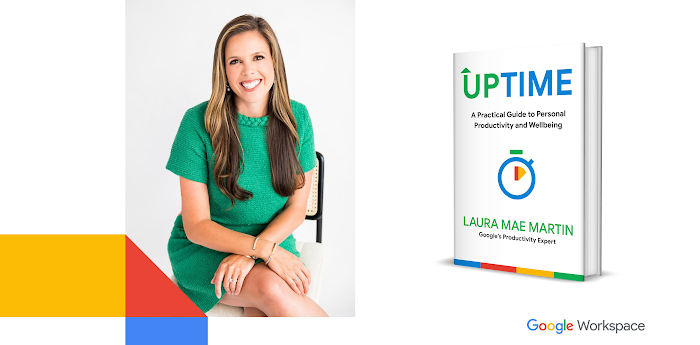How to start your small business online in three simple steps

Paul Jacobs
Product Manager, G Suite
If you want to get your small business online using G Suite, here are three simple steps to guide you through the process.
Try Google Workspace at No Cost
Get a business email, all the storage you need, video conferencing, and more.
SIGN UPYou have your business plan and you have your idea, and now you need to get your business out of your head and onto the web. The thing is, as a small business owner, we’re guessing you wear many hats. You may not have a web designer or marketing manager to help you get your business up-and-running online—because that’s your job, too.
This is why we’ve created cloud-first tools that can help you manage your business, whether you need to get a website, create a business email, or collaborate on-the-go with employees.
If you want to get your small business online using G Suite, here are three simple steps to guide you through the process.
1. Buy a domain.
To establish your identity on the web, you’ll need to register a domain (the URL address you use to view a website and send emails). There are a number of companies you can use to secure a domain for your business, including Google Domains.
How to get a domain with Google:
- First, pick a name. The email domain that you pick can tell a lot about your company and what it stands for. A good rule of thumb is to buy an email domain that’s unique, but that also quickly illustrates what your business can provide.
- Second, figure out what type of domain you need. As you pick a name, you should also consider the type of domain you might need, like .com, .org, .photography or more. This can help you illustrate, or differentiate, your company’s mission right away (example: .org signifies a nonprofit cause). Check out a list of different domain options, as well as pricing details.
- Lastly, sign up. Now that you’ve done your research and picked your domain, you’re ready to purchase your domain.
You can also buy domains and create websites through other companies, like Squarespace or Wix, and easily attach them to G Suite if you still need a business email.
Insider tip: A part of picking out the right domain for your business, is making sure someone else doesn’t already use it. Be sure to search if your domain already exists, and then check on social media to see if the social handles for that name are also available. If they are, sign up as soon as you can for social accounts using the same name as your domain. This will help round out your presence on the web and maximize exposure of your business.
2. Make a business website.
When starting a business online, you’ll want to stake your claim on some digital real estate. Websites are often time-consuming to create if you don’t have a plan in place first. Here’s our advice to help you set up your site:
Tips for building a business website:
- Define a clear goal for web visitors. Think about what you want people to do when they come to your website. Do you want them to purchase your product or sign up for your newsletter? Then build your site layout and content with that specific goal in mind. It’s important to avoid spreading yourself thin with multiple goals—keep it simple with just one or two key goals and optimize your site to reach them.
- Plan your page hierarchy. Create an outline of what pages you want to include on your website, such as a “home” page, “about” page, or “pricing” page. Thinking through your page hierarchy upfront will help your customers navigate through your site easier and find the information they need quickly. This can also help you avoid having to update web pages later.
- Build a budget you can stick to. Take a look at your budget and your schedule and see how much you can dedicate to this website. Your website is like a product, so you can consider the first iteration of your site as the minimum viable product that you need to create. Do you need a shopping cart? Do you need a blog? Make sure to check the boxes for the minimum website features that your business needs to run first. Once you have your requirements, you can make your money work for you and either DIY-it or hire a designer to support you with more complicated elements.
Insider tip: Take your website up a notch and think about the mobile experience of your site. You only have a few seconds to catch people’s attention on their phones.
You can use Think with Google’s tool, Test My Site, an easy way to measure your website’s performance on mobile. Enter your web address into Test My Site, and you’ll receive a report with your site score and a list of specific fixes that can help your business connect more quickly with people online.
3. Set up a business email.
A key part of your business is the relationships you’ll build. Relationships are built on communication, so you’ll want to set up an email address at your own domain so you can be contacted easily. More than 5 million paying businesses rely on Gmail for their professional email address to keep their companies running smoothly, particularly because of built-in security protections that block 99.9 percent of phishy emails.
When you create a custom email using your new domain, people outside of your business will know where they can reach you professionally (for example, “stephanie@yourcompany”). With Gmail, it’s easy to collaborate and stay productive—both online or offline and on any device. If you’re ready to set your company up with a business email, start here.
Insider tip: At this point, it’s also a good idea to consider which email aliases you want to use for your business, like “sales@yourcompany” for sales inquiries or “help@yourcompany” for support issues. When you’re first starting out with G Suite, emails sent to your aliases will be automatically forwarded straight to your inbox. Later you can change it to other inboxes once you add more team members to your G Suite account.
Building your business’ future
Now that you’ve set your business up online, it’s time to take it one step further by using productivity tools to house your documents, plans, and presentations. As you add new members to your team and grow your business, you can use G Suite apps to store all of your files and to collaborate in real-time. Build project proposals in Docs, crunch business data in Sheets—and have it all automatically saved in Drive. You can even set up video conferencing in Hangouts Meet to help your team stay connected no matter their location.
G Suite includes all the applications you need to get work done, and to get it done fast. Try it out for yourself, or reach out to our experts if you have questions in our G Suite community.



